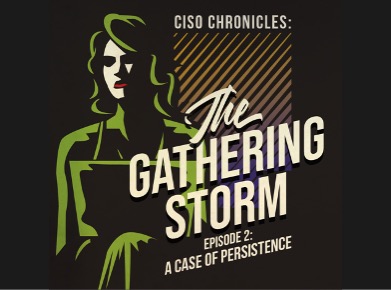Customers are the reason most businesses exist. Whether it’s healthcare, finance, retail, manufacturing, or entertainment, a business cannot succeed without customer interaction. It’s interesting to observe how this dynamic has changed over time. Today it is very clear that the customer is in control of this relationship, and much of the decision to continue the relationship is determined by how they feel throughout their interaction. In our first blog, The Unique Challenges of Customer Identity and Access Management, we discussed the challenges associated with CIAM, including security, privacy, consent and protecting customer data. However, we also suggested that the customer experience and customer journey are key to acquiring and retaining customers.
The customer journey is not a new concept. It’s also one that has numerous definitions. Essentially it can be described as plotting the path of a potential customer, including all the touch points as they work towards making a purchase decision, becoming a new customer, and then converting to a loyal long-term customer.
CIAM has become a very critical set of capabilities that can significantly transform the customer experience throughout their journey. This journey has become more important as it has increasingly intersected with security, customer trust, and the overall user experience. Let’s define an example customer journey, and then examine the various CIAM capabilities that enhance that experience.
Let’s use a six-step customer journey that we can briefly define and then apply CIAM capabilities towards and examine how they enhance the journey.
- Out of Market Trigger – Not a current customer, but some event occurs that begins the research process
- Research – Information is gathered on potential service providers, and subjected to comparative analysis by the customer
- Connection – Customer has an initial interaction with the service provider
- Transaction – The first transaction between the customer and business is executed
- Experience – An ongoing set of transactions between the customer and service provider as the relationship grows
- Loyalty – A cognitive change within the customer, representing the point at which they convert to a dedicated, long-term customer
Now that we have documented a journey we can use as a common framework, let’s review the important steps, the applicable CIAM capability, and how it can transform their experience.
The Customer Journey Begins
Once a customer has been triggered to begin research, they may choose to visit a business’s website. Upon first landing, they are presented with a dialog box that suggests that if they provide an email address, they can receive something of value in exchange. The potential customer feels they may want this thing of value being offered, so they enter their email address. The business now has a valid email address to be able to communicate with the potential customer. This is the beginning of what is known as “progressive profiling, where a business increasingly gets to know the customer by collecting additional information over time, in a way that attempts to be unobtrusive. This allows the business to market specifically to this potential customer, hoping to continue to engage and move towards a more significant connection.
The Important Initial Connection
Once the potential customer has completed their research and arrived at a decision, they will often further connect with that business, typically done through a registration process. Frictionless, easy registration can be done using a number of existing social platforms. Leveraging social login for registration allows for less form fill for the potential customer, thus streamlining the interaction. At the same time, the provider is able to pull relevant information about that potential customer from the social platform used during registration. This progressive profiling allows for even greater personalization of the marketing content sent to that potential customer.
Building a Relationship Through Trust
When the transaction is accomplished and the “potential” is removed as a designator for the customer, we move on to the login experience. From this point forward CIAM plays a pivotal role in balancing security vs user experience. CIAM can be used to provide a passwordless experience, as well as an adaptive access control function. Passwordless authentication provides for a very streamlined login experience, using the customer’s device (something you have) and a biometric, typically via facial recognition or by using a smartphone’s fingerprint reader (something you are). The customer does not have to remember overly complex passwords or tap into a clunky password manager for help. Adaptive access control device characteristics or user behavior. Combined, these functions provide a smooth user experience while also ensuring a secure transaction.
Establishing trust is important for the customer but it is also important for the business. As the customer continues to interact with the business, it is important to ensure that the adaptive access control features in CIAM continue to be leveraged, so that friction is only introduced into the user experience when signals indicate risk. The more mature the ability to detect and respond to risk signals, and conversely to identify the absence of risk, the more elevated and simplified the customer experience becomes.
Additionally, the ability to provide an Omnichannel experience has become a critical goal, as you are expected to deliver the same customer experience from every device and channel that your business supports. If you can do this well, you can create a single, 360-degree view of each customer. Transacting via a mobile application is the same as accessing the company website on a laptop. There is a consistency of service that builds trust. CIAM platforms that easily support OpenIDConnect (OIDC) and API extensibility are able to effectively meet these requirements.
A Cognitive Shift to Loyalty
Converting customers into long-term, loyal advocates is no small feat; it requires building trust and maintaining a high level of simplicity. It also requires ensuring the customer has control over their experience. Customer self-service here is key. Self-service gives customers the ability to manage their information, control what data a business has been given consent to and is able to share, as well as control the methods of authentication used by the customer. All these concepts assist in creating a better customer experience and deepening the customer relationship.
The key to maintaining customer loyalty, as well as protecting the business, is a clear and transparent understanding of how customer data is obtained, tracked and used. This can be achieved through Consent management, where a customer can actively grant, or revoke, consent to a particular usage of data by the business, and/or choose the right to be forgotten and easily access any information that a business may know about them.
The ability to turn a potential customer into a loyal advocate is the mark of the most successful businesses in the world.Those businesses have employed best practices to build trust with their customers and have invested and embraced a robust CIAM program and its capabilities in transforming that journey.
About the Author: The Customer Identity and Access Management Technical Working Group subcommittee was formed in July 2020. The team, led by Robert Block, includes Keith Graham, Rebecca Archambault, Stephen Lee, Asad Ali, Tommy Wu, Anil Bamzai, Saravanan Thiyagarajan and Stephen Cox.





